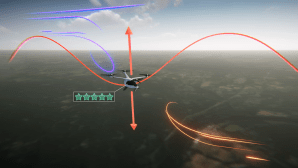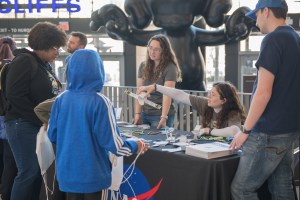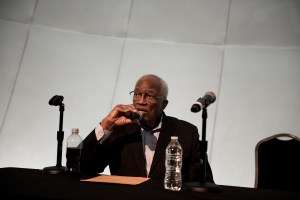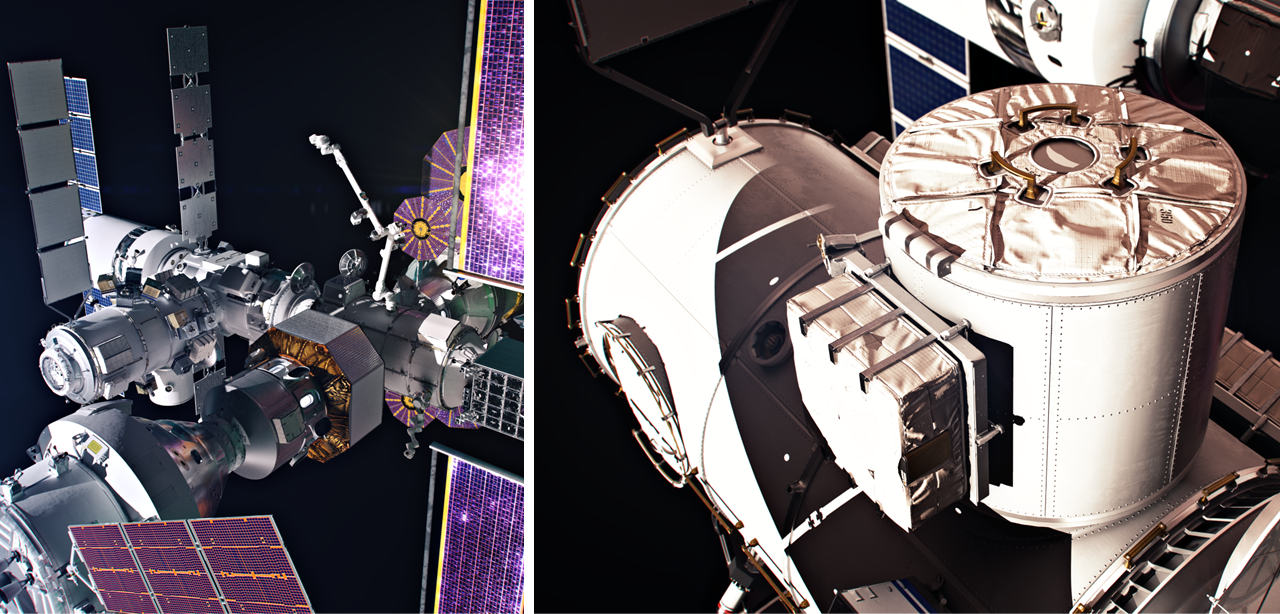Glenn Hangar Has Long Been the Face of the Center
The Flight Research Building, or hangar, at NASA’s Glenn Research Center in Cleveland has not only housed the center’s aircraft and Flight Operations team for decades, but has also served as a visual representation of the center for the public. NASA has taken advantage of the hangar’s size and shape — along with its location […]
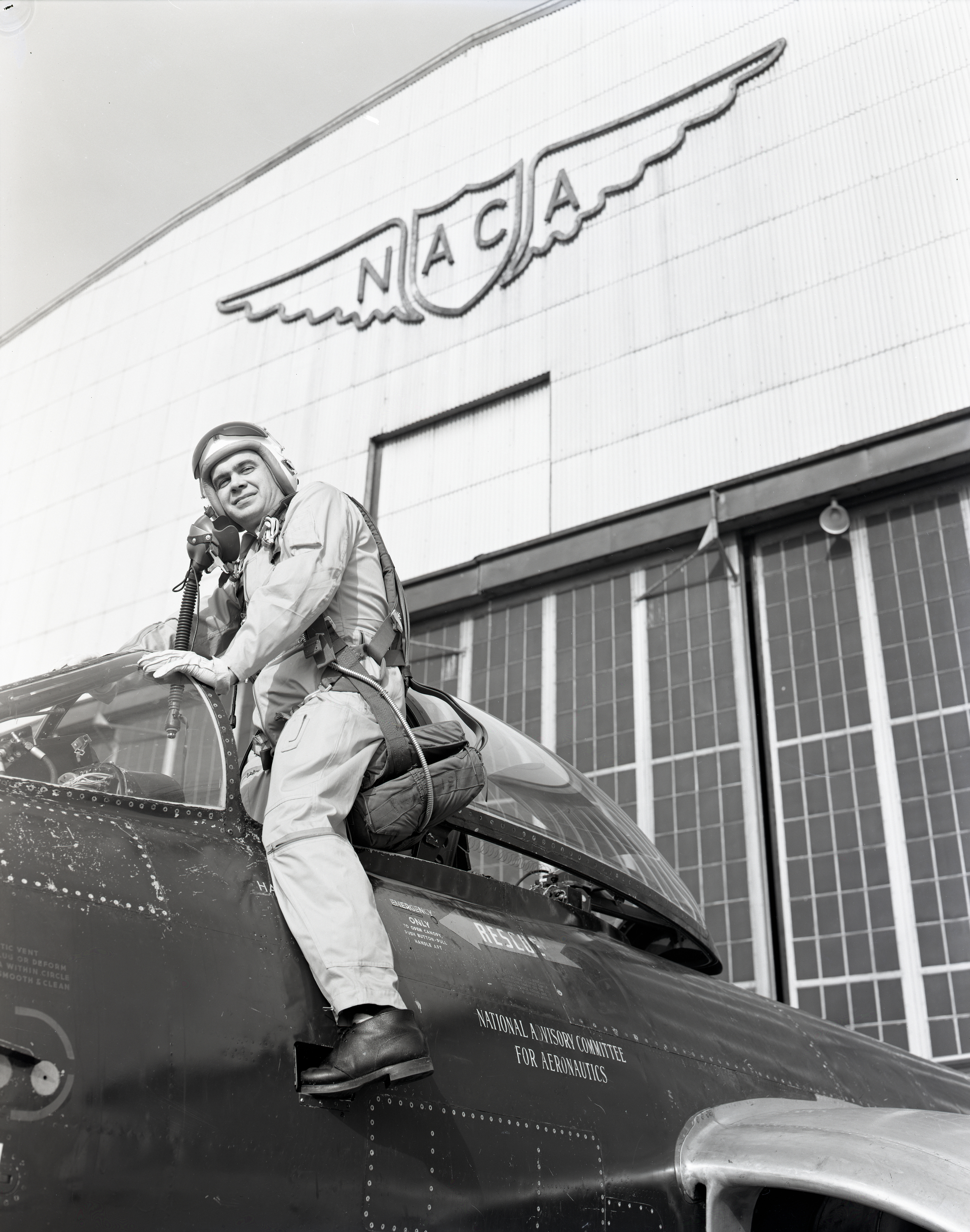
4 min read
Glenn Hangar Has Long Been the Face of the Center
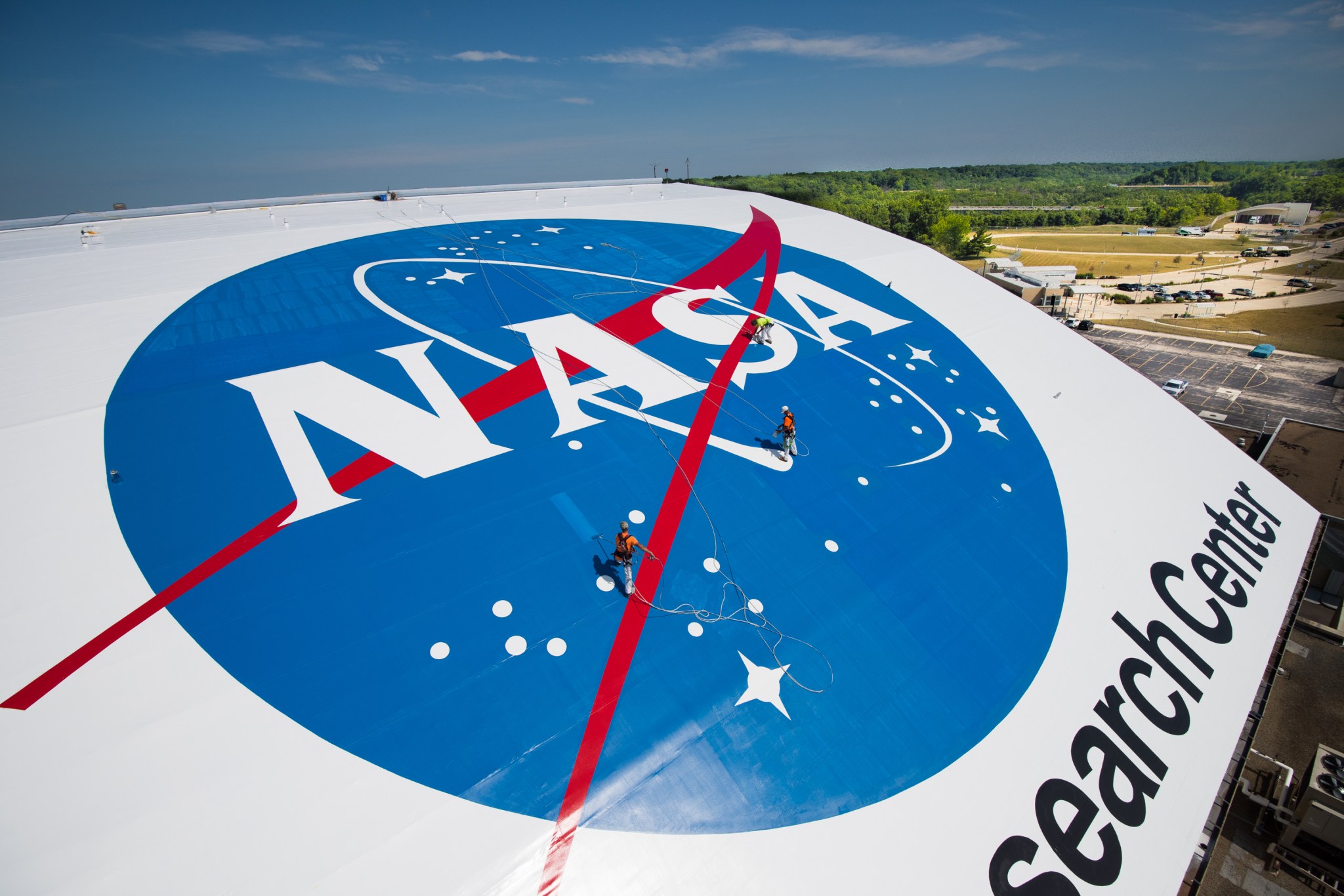
The Flight Research Building, or hangar, at NASA’s Glenn Research Center in Cleveland has not only housed the center’s aircraft and Flight Operations team for decades, but has also served as a visual representation of the center for the public. NASA has taken advantage of the hangar’s size and shape — along with its location near the center’s main entrance, the Cleveland Hopkins International Airport, and multiple freeways — to raise awareness about Glenn to both the local community and Cleveland visitors.
In the fall of 1941, the National Advisory Committee for Aeronautics (NACA) completed the first building at its Cleveland laboratory: the hangar. The letters “N-A-C-A” over a pair of wings were installed above its front and back aircraft entrances shortly thereafter. In 1946, “N-A-C-A” was painted in large white block letters onto the black roof facing the airport. This configuration remained in place for twelve years.
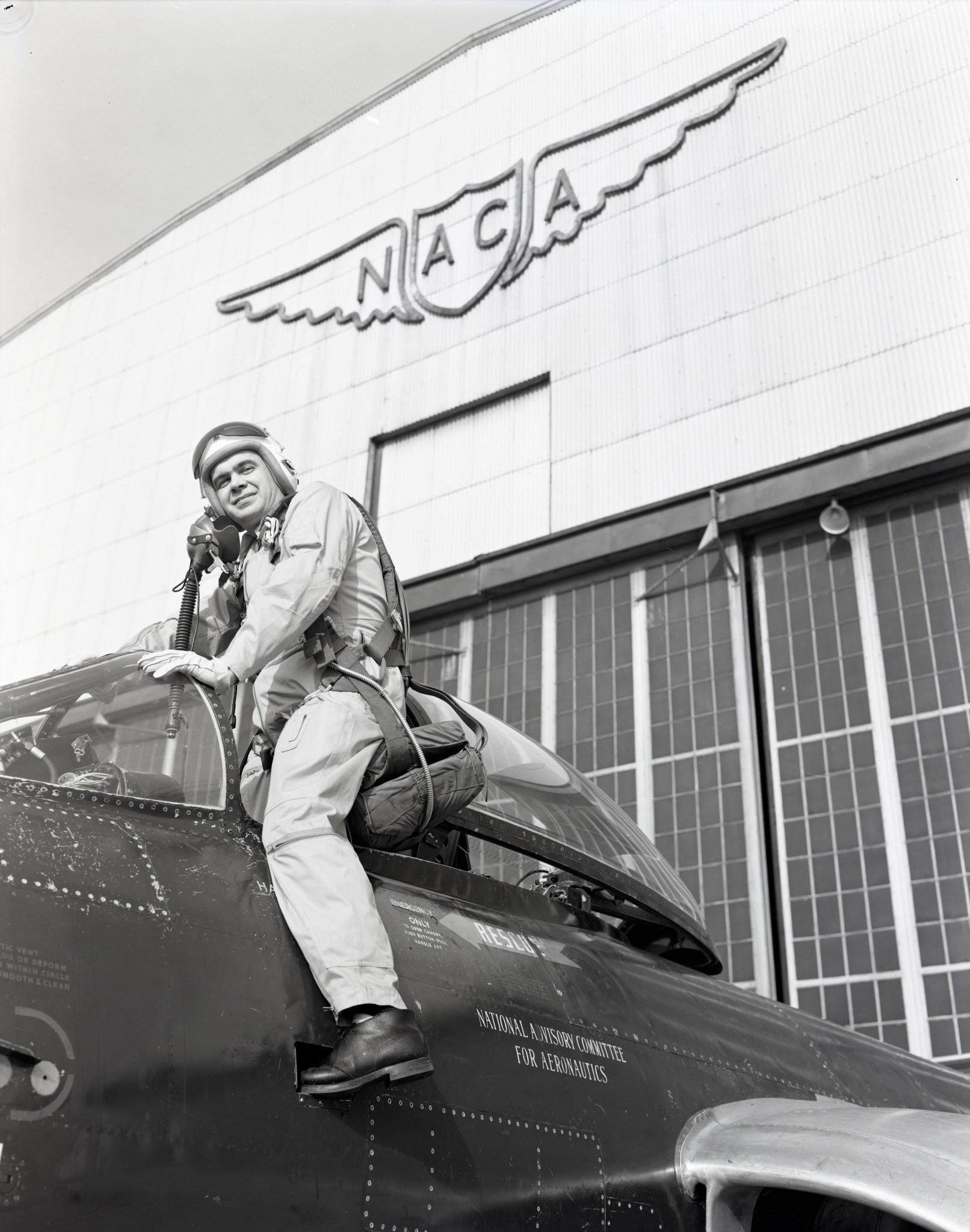
On Oct. 1, 1958, the NACA disbanded, and the laboratory was incorporated into NASA — the nation’s new space agency — as the Lewis Research Center. The next day, the “C” on the hangar roof was painted over with an “S,” and two weeks later, the NACA wings on the front and back were taken down and replaced with small “N-A-S-A” lettering.
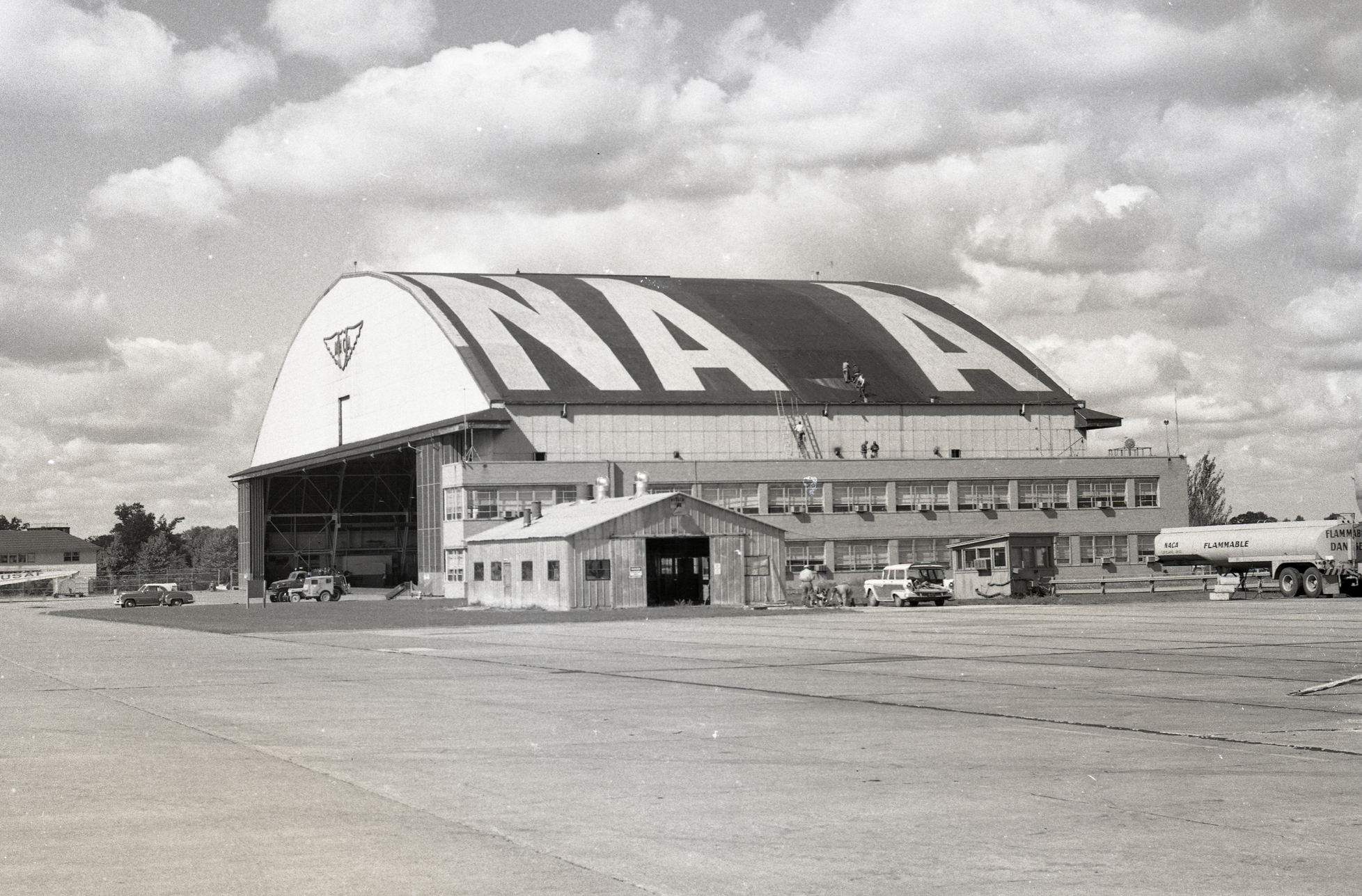
During this period, the new agency asked its employees to submit concepts for an official seal. In December 1958, the NASA administrator approved the design of James Modarelli, a graphic illustrator at Lewis and head of the Technical Publications Division. Soon thereafter, he was asked to create a simpler, easier to reproduce version to be used more broadly. In early 1959, Modarelli came up with the large blue insignia that later became known as the “meatball.”
In September 1962, a large NASA insignia was installed on the front entrance of the Lewis hangar facing Brookpark Road, where it remained along with the “N-A-S-A” letters on the back and roof for nearly 30 years. In an effort to rebrand the agency in the mid-1970s, NASA replaced Modarelli’s blue insignia with the highly-stylized logo type, also known as “the worm.” Although the change of logos was mandated, the meatball never fully went away, and it remained on the front of the Lewis hangar.
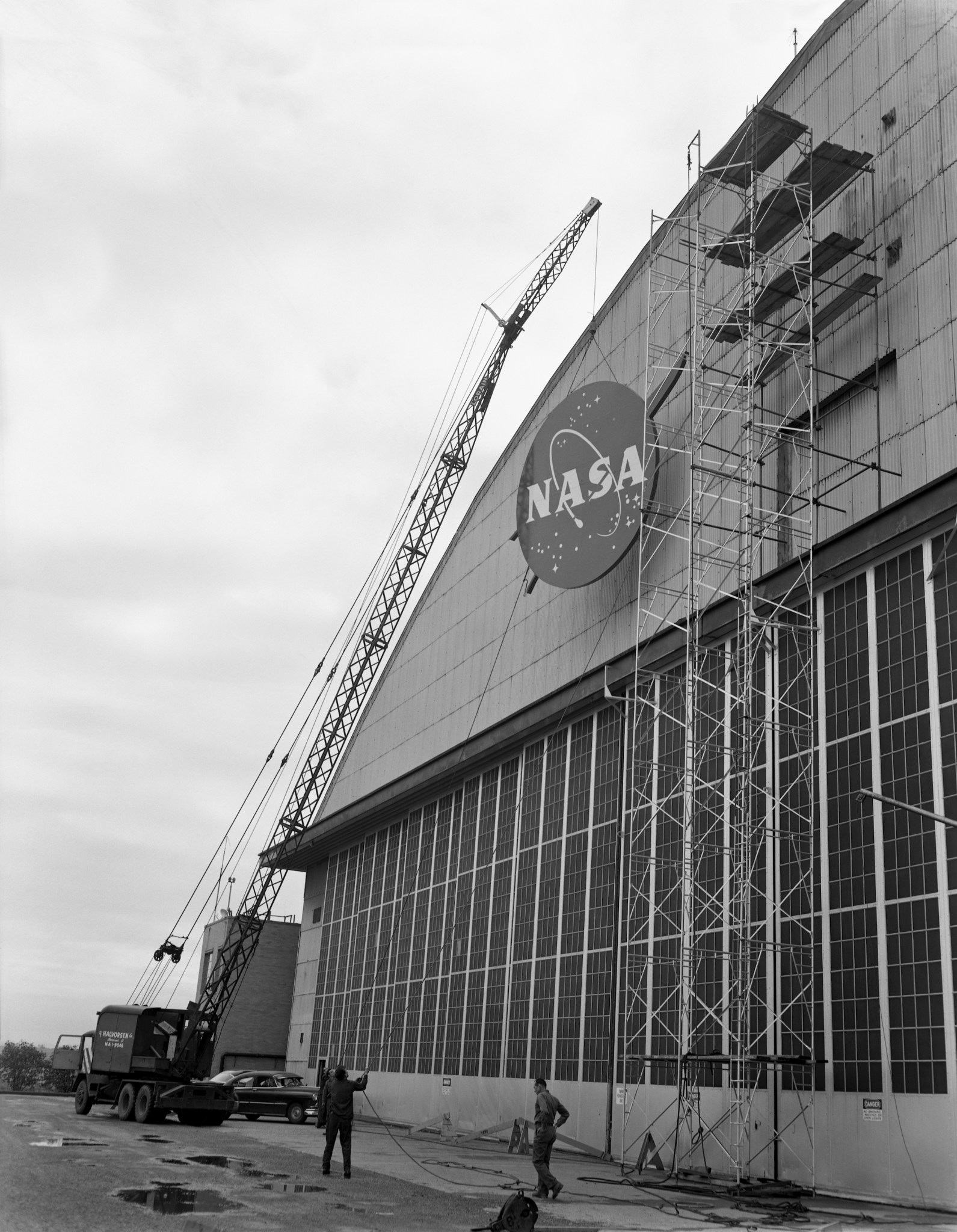
With its fiftieth anniversary approaching in 1991, the center began developing strategies to improve its visibility in the community. The most significant action was a redesign of the hangar graphics. In November 1990, the large red worm logo was installed on the front, and “Lewis Research Center” was added below with lighting to make graphics visible at night.
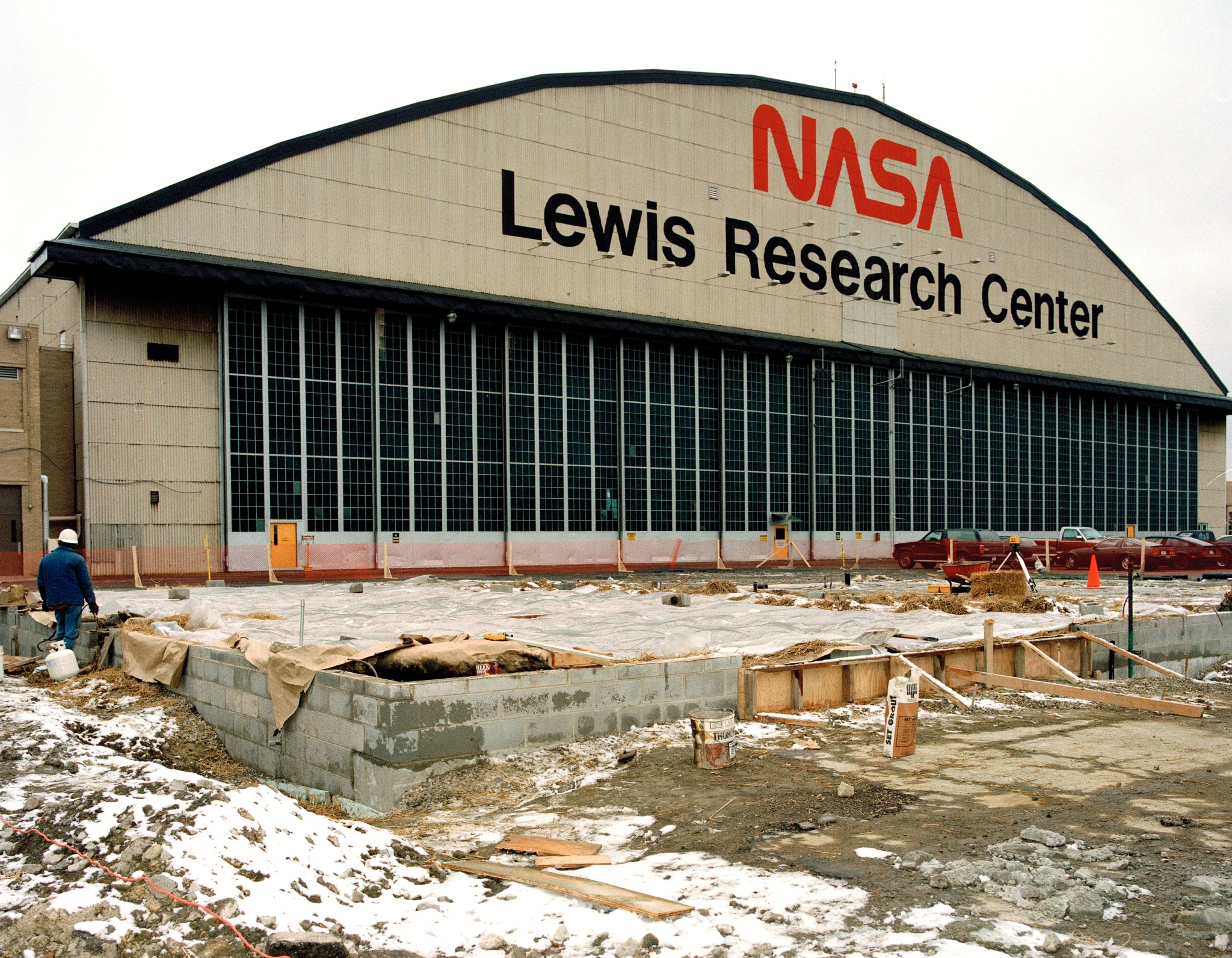
In 1992, new NASA Administrator Daniel Goldin decided to reinstate the meatball as the agency’s insignia to improve morale. Two large new meatball signs were constructed in the center’s shops to replace the worm on the front of the hangar and take the place of the 35-year-old insignia on the back. To mark the occasion, the center invited the retired Modarelli to participate in a rededication event at Lewis on Oct. 1, 1997. Modarelli and many of the 250 attendees signed their names on the back of the emblem, which remained above the back entrance until 2022.
In 1993, Congress decided to rename the Cleveland facility the Glenn Research Center. By early 1999, the Lewis Research Center text on the front of the hangar was changed to “Glenn Research Center” with “Lewis Field” in smaller type underneath.
The hangar roof was painted white in the early 1990s, first with black “N-A-S-A” letters, then with pale blue ones. In 2016, the center chose to repaint the roof with a large NASA meatball insignia, with “Glenn Research Center” in text below.
The meatball remains today, a larger-than-life symbol of NASA Glenn’s presence in the community.
Read more about the development and applications of the NACA and NASA logos and insignias: https://go.nasa.gov/3FcOGe5
Robert S. Arrighi
NASA’s Glenn Research Center




















